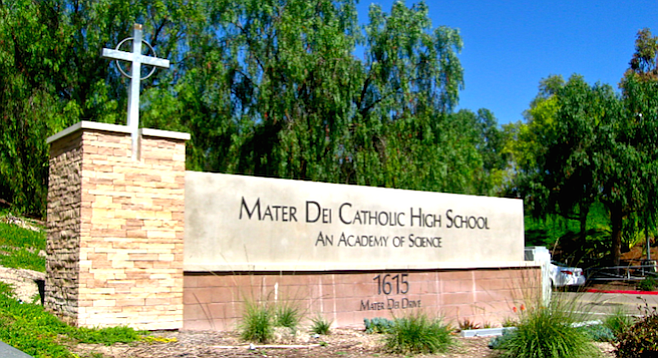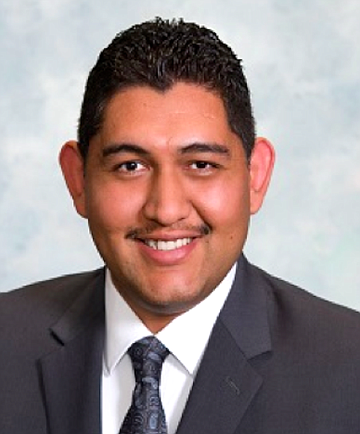 Facebook
Facebook
 X
X
 Instagram
Instagram
 TikTok
TikTok
 Youtube
Youtube

In the latest round of charter-school wrangles, the legality of Otay Ranch Academy for the Arts has been challenged by the Chula Vista Elementary School District.
On February 25, the San Diego Union -Tribune reported “C.V. In Dispute with Charter School.”
Otay Ranch Academy is located on the campus of Mater Dei Catholic High School in eastern Chula Vista. The school offers educational services to K–8 students.
The issue for Chula Vista Elementary is boundaries and a bleeding of state funding. The authorizing district for the Otay Ranch Academy is tiny Julian Union Elementary School District in the eastern part of the county. By setting up shop in Chula Vista, the charter deprives the district of students and students’ average daily attendance monies. The elementary district has sent the academy a cease-and-desist letter.
Julian Union Elementary does not provide the educational services to Otay Ranch Academy; rather, the services are provided by Harbor Springs Charter School, a 501(c)3. Harbor Springs is one of three charter organizations operating under the umbrella of Springs Charter Schools.

Complicating the issue, Chula Vista Elementary trustee Glendora Tremper works as a speech language pathologist for Springs Charter Schools. According to board-meeting minutes taken in 2015, Tremper stated “she works for a charter that she thought would stay north and totally separated but that she is now working in Chula Vista since her employer [Springs Charter Schools] opened a charter at the Mater Dei Catholic High School campus.”
According to California Ed Code Section 47605.1(c), it is legal for non-classroom based charter schools to provide classroom experiences at resource centers in contiguous counties, provided the facility is used exclusively to serve non-classroom-based-pupils. The academy’s website boasts a four-day-a-week schedule of classes with major subjects taught by direct instruction.

In a February 29 interview with Springs Charter superintendent Kathleen Hermsmeyer, she argued that non-classroom-based programs are authorized by the state and calculate their attendance on work product, like portfolios of student work, as opposed to seat-time minutes.
Hermsmeyer says the academy has 345 K-8 students and 12 teachers, and the academy provides special education services to students from many areas.
Some have suggested that oversight from far-flung authorizing agencies like Julian elementary is insufficient. Hermsmeyer counters, “Julian is an advocate for charters and they have a business manager that understands charter-school financing. We look for an authorizer that we can have a good relationship with. They visit our site and we make reports to their board and write monthly reports.”
Julian gets an oversight fee of 1 percent and the charter rents a space at their district office and pays for other services.
Hermsmeyer said she is aware of six or seven other charters that received a cease-and-desist notice. “We’re going to have to get clarification about what we are allowed to do because we have been allowed to do this for 20 years — we’ve been doing exactly the same thing — and now they’re saying no.”
“If we get too much heat we can shut down a center, but we’re not going to shut down Otay Academy. We have a lease and interested parents. Until the courts say we have to, we won’t leave.”
The academy pays $14,000 a month to lease classrooms at Mater Dei. Hermsmeyer says the academy gets the same proportionate amount of state funding per student as Chula Vista Elementary, “but there are many streams of money that we are not eligible for as a non-classroom-based charter.”
Hermsmeyer says, “You’ll notice that none of this is about educating students; it’s a turf war. I completely understand where they’re [the big districts] coming from, but I think the reaction should be: ‘Hey, parents, what can we do to provide a more flexible innovative program, more focused on art or dual immersion?’”

Chula Vista Elementary School District trustee Francisco Tamayo said in a February 29 interview that Otay Academy first came on the radar of several boardmembers when they advertised for a full-time aide. He said trustees were aware that National School District, among others, had successfully resolved lawsuits against charters that were operating illegally within their boundaries.
He went on to say, “In 2002, the governor signed AB 1994 into law, prohibiting with some exceptions, charter schools from locating outside the jurisdiction of its authorizing agency except in very limited circumstances. Chula Vista Elementary is one of the leaders in dual-immersion programs in the region, and last year we invested five million dollars in arts programs. Overall, we are asking the charter to comply with the law. The [Chula Vista Elementary School District] has a process to review charter-school petitions, and they should follow it if they want to operate in our district boundaries.”
Disclosure: The author’s daughter is on the bargaining team for the Chula Vista Educators.
(corrected 3/2, 1:50 p.m.)


In the latest round of charter-school wrangles, the legality of Otay Ranch Academy for the Arts has been challenged by the Chula Vista Elementary School District.
On February 25, the San Diego Union -Tribune reported “C.V. In Dispute with Charter School.”
Otay Ranch Academy is located on the campus of Mater Dei Catholic High School in eastern Chula Vista. The school offers educational services to K–8 students.
The issue for Chula Vista Elementary is boundaries and a bleeding of state funding. The authorizing district for the Otay Ranch Academy is tiny Julian Union Elementary School District in the eastern part of the county. By setting up shop in Chula Vista, the charter deprives the district of students and students’ average daily attendance monies. The elementary district has sent the academy a cease-and-desist letter.
Julian Union Elementary does not provide the educational services to Otay Ranch Academy; rather, the services are provided by Harbor Springs Charter School, a 501(c)3. Harbor Springs is one of three charter organizations operating under the umbrella of Springs Charter Schools.

Complicating the issue, Chula Vista Elementary trustee Glendora Tremper works as a speech language pathologist for Springs Charter Schools. According to board-meeting minutes taken in 2015, Tremper stated “she works for a charter that she thought would stay north and totally separated but that she is now working in Chula Vista since her employer [Springs Charter Schools] opened a charter at the Mater Dei Catholic High School campus.”
According to California Ed Code Section 47605.1(c), it is legal for non-classroom based charter schools to provide classroom experiences at resource centers in contiguous counties, provided the facility is used exclusively to serve non-classroom-based-pupils. The academy’s website boasts a four-day-a-week schedule of classes with major subjects taught by direct instruction.

In a February 29 interview with Springs Charter superintendent Kathleen Hermsmeyer, she argued that non-classroom-based programs are authorized by the state and calculate their attendance on work product, like portfolios of student work, as opposed to seat-time minutes.
Hermsmeyer says the academy has 345 K-8 students and 12 teachers, and the academy provides special education services to students from many areas.
Some have suggested that oversight from far-flung authorizing agencies like Julian elementary is insufficient. Hermsmeyer counters, “Julian is an advocate for charters and they have a business manager that understands charter-school financing. We look for an authorizer that we can have a good relationship with. They visit our site and we make reports to their board and write monthly reports.”
Julian gets an oversight fee of 1 percent and the charter rents a space at their district office and pays for other services.
Hermsmeyer said she is aware of six or seven other charters that received a cease-and-desist notice. “We’re going to have to get clarification about what we are allowed to do because we have been allowed to do this for 20 years — we’ve been doing exactly the same thing — and now they’re saying no.”
“If we get too much heat we can shut down a center, but we’re not going to shut down Otay Academy. We have a lease and interested parents. Until the courts say we have to, we won’t leave.”
The academy pays $14,000 a month to lease classrooms at Mater Dei. Hermsmeyer says the academy gets the same proportionate amount of state funding per student as Chula Vista Elementary, “but there are many streams of money that we are not eligible for as a non-classroom-based charter.”
Hermsmeyer says, “You’ll notice that none of this is about educating students; it’s a turf war. I completely understand where they’re [the big districts] coming from, but I think the reaction should be: ‘Hey, parents, what can we do to provide a more flexible innovative program, more focused on art or dual immersion?’”

Chula Vista Elementary School District trustee Francisco Tamayo said in a February 29 interview that Otay Academy first came on the radar of several boardmembers when they advertised for a full-time aide. He said trustees were aware that National School District, among others, had successfully resolved lawsuits against charters that were operating illegally within their boundaries.
He went on to say, “In 2002, the governor signed AB 1994 into law, prohibiting with some exceptions, charter schools from locating outside the jurisdiction of its authorizing agency except in very limited circumstances. Chula Vista Elementary is one of the leaders in dual-immersion programs in the region, and last year we invested five million dollars in arts programs. Overall, we are asking the charter to comply with the law. The [Chula Vista Elementary School District] has a process to review charter-school petitions, and they should follow it if they want to operate in our district boundaries.”
Disclosure: The author’s daughter is on the bargaining team for the Chula Vista Educators.
(corrected 3/2, 1:50 p.m.)
Comments